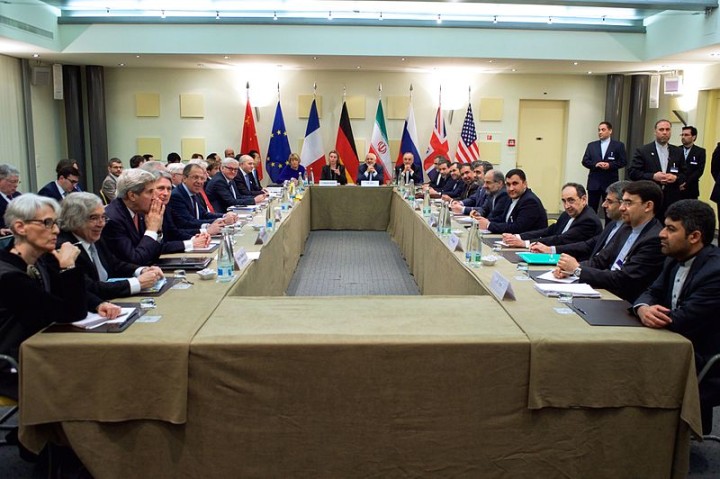If the US wants to make the Iran deal stick, we have to face up to our broken nuclear promises
A major sticking point for universal support for the Iran deal is the worry expressed repeatedly by doubters and supporters alike, in the plethora of mainstream media coverage, that in 15 years Iran may have the capacity to break out and produce a nuclear bomb only one year after the deal expires. David Petraeus and Dennis Ross, Obama’s former Special Assistant on the Middle East, have actually suggested, in The Washington Post, that we should “put teeth” into the deal by threatening now that “if Iran dashes toward a weapon especially after year 15, that it will trigger the use of force.”
How much better would the public be served if the extensive reporting on the deal also provided the information we need on how we could beat Iran to the punch and honor our own obligations under the 1970 Non-Proliferation Treaty to negotiate for the elimination of nuclear weapons?
First, we must stop provoking Russia and create a climate for negotiations. The United States should agree to a proposal made by Russia and China to negotiate a space weapons ban instead of continuing to block all discussions of a draft treaty they tabled at the UN in Geneva in 2008 and resubmitted this year. We should dismantle NATO, a rusty Cold War holdover, or at least reverse its eastward expansion which we promised Gorbachev would never happen beyond East Germany after the wall came down. And we should bring home the 300 US nuclear weapons now parked in five NATO countries: Germany, Belgium, Netherlands, Italy, and Turkey. We should reinstate our 1972 Anti-Ballistic Missile Treaty with Russia, which the United States walked out of in 2002 after 30 years, and remove our new missile bases in Turkey, Poland, and Romania. It is ironic that underpinning the deal that Kennedy negotiated with Khrushchev, to remove Soviet missiles from Cuba, was US removal of its missiles from Turkey. Well, they’re back!
Perhaps Russia would then agree to negotiate with us about eliminating our arsenals of 15,000 deadly nuclear bombs out of the 16,000 still threatening the planet. We could then call the seven other nuclear weapons states to the table—the UK, France, China, India, Pakistan, Israel, and North Korea—to give up their combined arsenals of 1,000 warheads in a negotiated treaty for complete nuclear disarmament. Civil Society has already produced a Model Nuclear Weapons Convention, an official UN document, laying out all the required steps for verified, monitored nuclear disarmament. We know how to do it! This is what we promised in 1970 in the Non-Proliferation Treaty (NPT), which provides that we “pursue negotiations in good faith on effective measures relating to cessation of the nuclear arms race at an early date and to nuclear disarmament.” President Obama has recently proposed that the United States spend $1 trillion over the next thirty years for two new nuclear bomb factories, delivery systems, and warheads. The US just tested a dummy bunker buster nuclear warhead in Nevada in August.
It is sad that we are only hearing about Iran’s obligations under the NPT and not about our own broken promises. With the proper cooperative attitude, the United States could easily accomplish verifiable and monitored nuclear disarmament in 15 years, so we won’t have to demonize Iran when the 15 years are up. As Walt Kelly’s Pogo said, “We have met the enemy and he is us!”
This article is published by kind permission of the author and first appeared on www.thenation.com










